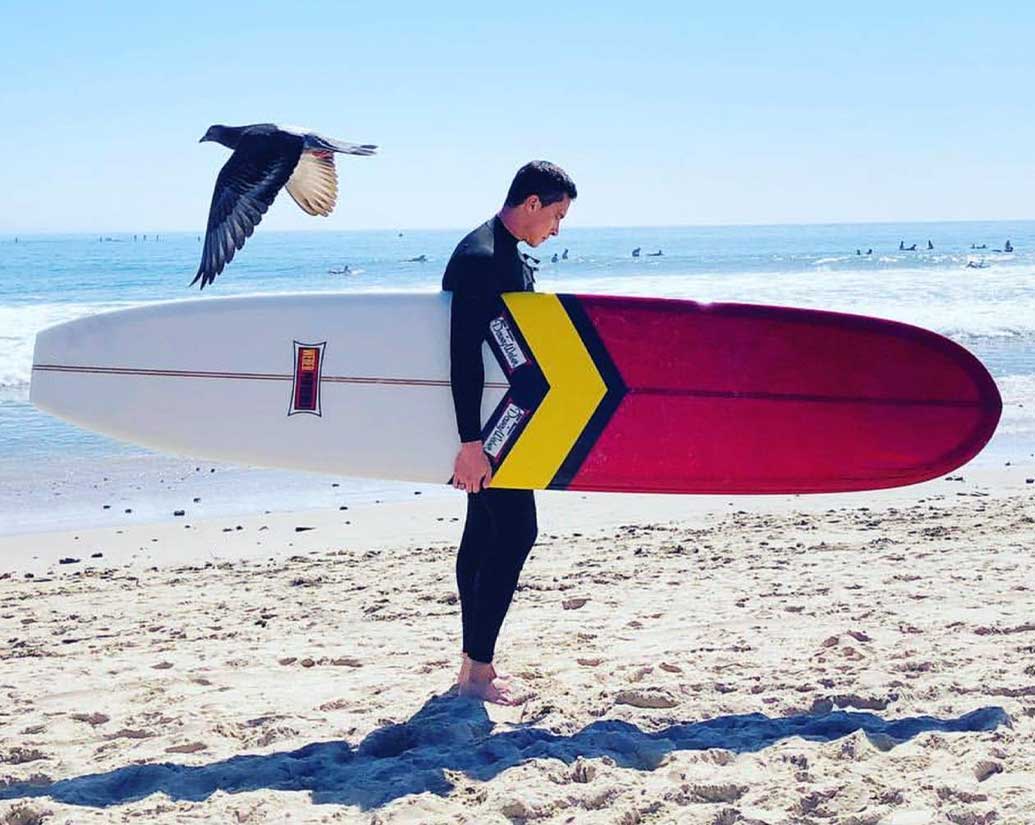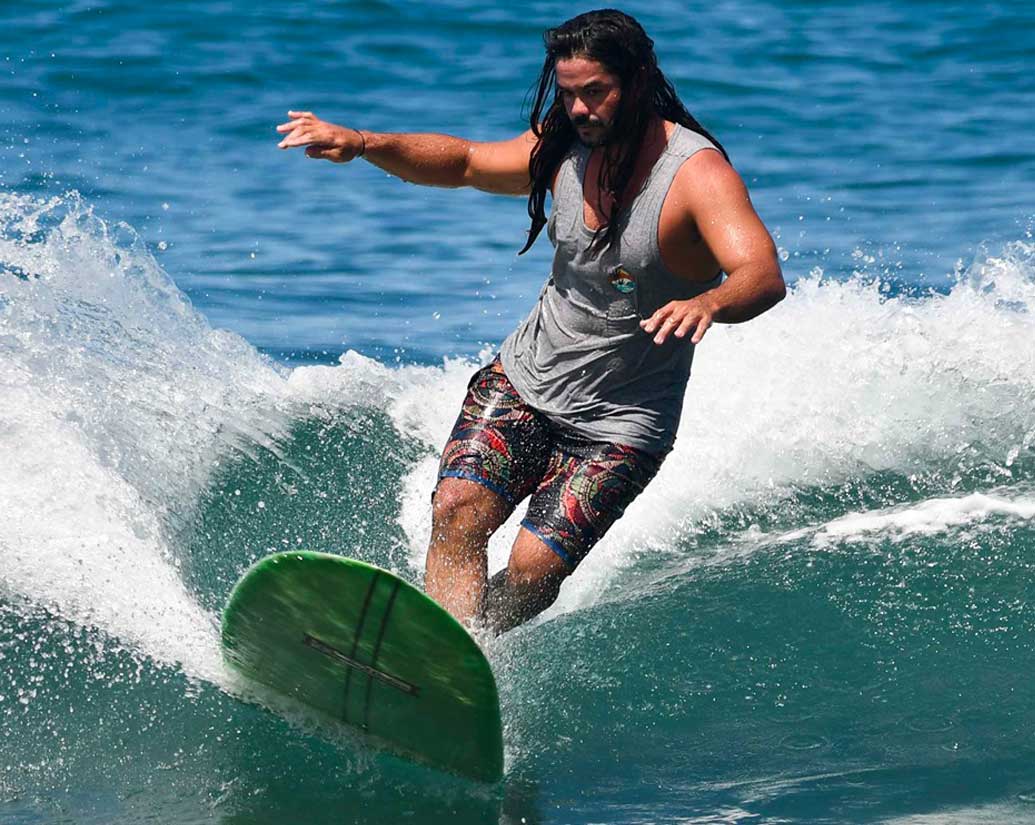Notes On A Legend
Daybreak at Manhattan Beach. A surfer sits back on his board watching an approaching swell. It’’ glassy, like a mirror. So still, not a hair on his blond head moves. As the wave begins to peak, he swings his long board toward shore, takes two deep strokes into the water, and feels the board and wave are one. He stands…
Next year will mark a half century since a toe-headed seven year old kid, named David Earl Weber, first paddled out near Manhattan Beach pier to catch a wave on a borrowed 11 foot long redwood board. That would be 1945.
It took the kid nearly two years to ride a wave all the way to the shore under the watchful eyes of original Manhattan Beach Surf Club members Dale Velzy, Barney Google, Bob Simmons, Bev Morgan and Bob Hogan. Within a couple of years, Simmons had produced a fiberglassed, all-balsawood board and “Dewey” Weber bought a used one from Bev Morgan for $35….The sport of surfing, still in its infancy in the United States would never be the same.
The advanced technology of the first foam surfboards opened a door that Dewey blew off its hinges, perfecting a style of surfing in the early 1950’s that totally redefined the sport. To this day, Dewey is regarded as the father of “hot-dogging;” an innovator whose agility and quickness produced long noserides, carving rail turns, huge backhand cutbacks and head dips.
Dewey approached surfing like he approached wrestling at Mira Costa High School, where he was a standout four-year varsity letterman. He was such a talented wrestler; in fact, that he earned a spot on the U.S. Olympic Wrestling Team, but an elbow injury during a key match prevented him from accepting the invitation.
Strong and athletic, he was among a handful of pioneer surfers who with each wave, strived to do something new or do something better. Progressive, aggressive, and determined are labels that stick to the surfer in red trunks who came to be known, because of his speed, as the “Little Man on Wheels.”
His first trip to Hawaii in 1956 with 15 other Mira Costa graduates gave Dewey his first exposure to the force of Oahu’s North Shore. He wasn’t intimidated. He was pumped. Local Hawaiians watching him surf Waimea and Makaha had never seen anyone work the big waves like Dewey. He carved the faces of the giant swells like no one before him, leaving some of the locals to suggest that he was actually “ruining” the waves. Filmmaker Bud Browne caught him at Makaha on a 20-foot day and a still from the session was reproduced on the inaugural United States Surfing Association’s patch in 1964.
By the 1960’s, a new singing group, known as the Beach Boys, and the popularity of the “Gidget” and “Beach Blanket” movies, helped launch the surfing craze. Dewey, by then, was a cult figure. Kids wanted to dress like him, look like him, and most of all, surf like him.
In an eloquent tribute following Dewey’s death in January 1993, Chris Ahrens wrote in “Surfing” magazine: “I wanted to be just like Dewey Weber – every gremmie did.” Ahrens added, “Unlike many of his contemporaries, Weber had no idea what the boundaries of performance surfing were. On his quest to find out, he stretched them, bent them and redefined them for the rest of us.


